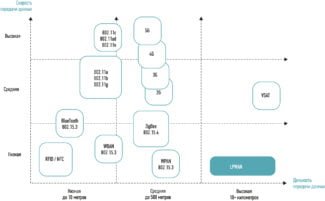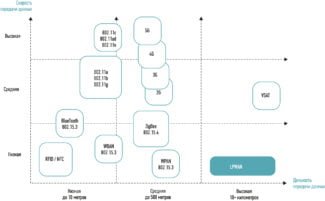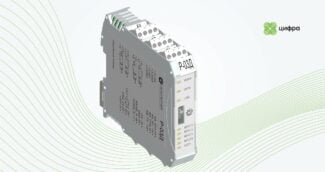According to analysts, wireless sensing and radar sensors will create entirely new types of Internet of Things sensors that will provide the basis for innovative types of applications and services, from medical diagnostics to object recognition and smart home interaction.

The ten most promising wireless technologies of the future
In five years, new wireless data technologies will change our world. Unmanned cars will become safe and entertain passengers, wireless charging will become convenient, Internet of Things sensors will be able to work autonomously for years, robots and virtual assistants will be able to better distinguish their surroundings and voices, geo-positioning accuracy will grow to one meter. And there will even be new interior designs. Here are ten promising wireless technologies that, according to Gartner, will dominate corporate and residential networks in the future.
Over the past two decades, wireless technology has managed to displace many traditional means of communication and information transfer. The next five years are expected to see the appearance of new types of wireless communications, which will become the basis for the development of promising technologies, such as robotics, autonomous land and air transport, medical gadgets.
The existing wireless solutions are being improved and adjusted to the needs of new generation developments. In some cases, on the contrary, the emergence of fundamentally new promising technological trends dictates the need to develop unusual communications with specific requirements for power, energy savings, software control, great autonomy.
Research firm Gartner has analyzed key trends and identified ten wireless technologies that will dominate the market as the next generation of enterprise architectures.
Wi-Fi networks
Wi-Fi networks are today and will remain the basis of high-performance networks for home and office at least until 2024. In addition to its traditional role, the technology will find application in new developments. For example, as the basis for radar systems or as an element of next-generation two-factor authentication systems.
At the end of 2018, the cross-industry group Wi-Fi Alliance announced the launch of a new version of the standard – IEEE 802.11ax, which was marketed as Wi-Fi 6. The new standard is compatible with previous versions and supports the 2.4 GHz and 5 GHz bands. Wi-Fi 6 devices will support Orthogonal Frequency Division Multiple Access (OFDMA). This means synchronous data transmission to multiple clients at the same time at an average speed. In addition, the combined operation of MU-MIMO and OFDMA technologies will support up to eight connections at up to 11 Gb/s. In Wi-Fi 5 the number of such connections did not exceed four.
The new Target Wake Time feature of Wi-Fi 6 will provide the ability to set a sleep schedule to conserve battery power.
The introduction of Wi-Fi 6 will significantly increase the density of wireless networks, improving the quality of data exchange in public places with a large number of users per unit area – in transport, corporate offices, trading halls, hotels and stadiums. The first commercial launches of Wi-Fi 6 are scheduled for late 2019.
The basics of wireless networks
Wireless LANs (WLANs) are based on the local area networking technology with radio link communication described in the IEEE 802.11 standard. This technology gives the user a familiar Etherne t-network experience using radio waves as the physical medium for transmitting information. The 1999 WLAN standard defines the frequency ranges for communication and data rates.
The structure of a wireless network is defined by a basic WLAN station, called a point of access (or sometimes a gateway), connected to a conventional Etherne t network and creating a cell with radio access. Within this cell, clients can connect to the Ethernet network via radio links.
Since the access point can also operate as a WLAN client, a network of multiple access points can function as a wireless network.
Communication using the IEEE 802.11 family of standards differs in terms of the frequencies and data rates used, from 1.2 Mbps at 2.4 GHz as described in IEEE 802.11, to 54 Mbps at 2.4 GHz in IEEE 802.11g, and from 54 Mbps at 5 GHz in IEEE 802.11a to 500 Mbps at 5 GHz in the soon-to-be-awaited IEEE 802.11n standard.
However, as frequencies and transmission speeds increase, the size of the RF cell, and therefore the maximum distance between the access point and the client, decreases. Clearly, the maximum possible distance from the access point to the client depends on the radio propagation environment within the WLAN cell where the system is used. As you know, reinforced concrete slabs, as well as a lot of interference radiated by various equipment, significantly reduce the maximum communication range. In addition, there is a phenomenon of interference in the propagation of radio waves, which also reduces the range of WLAN-systems. Depending on the radiated power and receiver sensitivity, the maximum distance between the access point and the client in an open area can be up to 300 m, and in office buildings – up to 50 m. In factory buildings, it is usually less than 50 m.
Industrial WLAN: Increasing flexibility, lowering costs
Adopting wireless networking technology in industry not only adds significant flexibility, it can also save organizations significant amounts of money. In today's distributed control and data acquisition systems, sensors and actuators are becoming more and more "intelligent" and acting as "smart controllers," providing much better control than conventional devices. Such systems are connected to the host programmable controller, using coaxial cable or twisted-pair copper cable as the physical layer. A significant portion of the cost of such control systems is in the cabling, in this case Ethernet cabling. If, during the design or operation of such a system, the need arises to make changes, expand the network, or adapt it to new equipment, there will be additional high costs to connect new sensors or actuators, not to mention the material and time resources required to supplement and change the topology of such a cabling network. In this situation, wireless LANs can reduce cabling costs and increase system flexibility in terms of modification capabilities. This can be illustrated in the following scenario.
First of all, for each individual machine or industrial robot, one access point is connected to the Ethernet port of the head controller. The agent programs (actors) can then be implemented wirelessly in the radio network created by this access point. Wireless clients are equipped with an Ethernet interface to connect sensors and actors; in the latest developments, WLAN modules are already integrated directly into the "smart controllers", which means that changes to actuators can be made quickly. Implementation of additional sensors in such a situation will not create insurmountable problems. Another important advantage is the possibility of direct access to sensors at the network level of the OSI model (IP protocol). "Smart controllers" are often equipped with an integrated web server, which allows the current status and diagnostic information to be transmitted during operation outside the hazardous area to a remote computer for later analysis. Wireless adapters are already built into service and diagnostic equipment in the automotive sector, so that programs and microcode can be downloaded to the devices via the Internet directly from the office.
Wireless Wi-Fi data transmission standard
As noted earlier, Wi-Fi technology refers to one of the ways of transmitting information through radio communication. This technology is now the most widespread in the leading world powers and is rapidly developing in the Russian Federation. It allows users to connect without any wired connections to the Internet. Wi-Fi technology was invented in Holland by NCR Corporation/AT&T. This system was originally intended for use in point-of-sale systems and was introduced as WaveLAN. It was capable of supporting information exchange at a speed of about two Mbit/sec. In late 2009, the IEEE 802.11n standard was approved, which made it possible to increase the speed of information exchange in Wi-Fi network by up to four times when compared to equipment using the 802.11g standard. Theoretically, 802.11n makes it possible to achieve transfer rates of up to 600 Mbps.
The use of this technology allowed all users of computer devices to appreciate the advantages of mobile Internet at home, at work or in public places, as they were able to move around. All owners of mobile computer devices that have a built-in Wi-Fi module can connect to the Internet at rather high speeds of information exchange.
As noted earlier, Wi-Fi technology is based on the use of radio communication. Radio waves are electromagnetic oscillations that propagate at speeds close to the speed of light. Their main parameters are the pulse frequency, wavelength and power of radiation. The full frequency range used for radio communication is divided into a set of frequency bands located in the range from about thirty Hertz to three thousand Gigahertz. Wireless Wi-Fi networks, according to a set of 802.11b,g,n standards, can use a frequency range of 2400 to 2483.5 MHz. That is, the centimeter frequency range.
Radiation Harm: Truth or Myth
Yes, this technology uses the radio band. But the common notion about the harm of Wi-Fi is more of a myth. From the same cell phone (with the Internet turned off) the radiation is much stronger. Radiation from routers is not capable of causing serious changes in the human body. The exceptions may be enclosed spaces where there are many routers working simultaneously.
In this case, Wi-Fi can be a health hazard. However, routers installed in apartments, offices and public places, firstly, are not so close to each other, and secondly, they are not so powerful to have a significant impact on human health.
Answering the question whether the radiation from Wi-Fi router is harmful or not, you can say that it will not bring significant harm to health. In normal conditions, such as in an apartment, it is harmless.
FAQ
The correct pronunciation is "Wi-Fi". Now it is not deciphered in any way, but originally it was an abbreviation for "Wireless Fidelity" or a play on words from Hi-Fi. The latter is also short for "High Fidelity.
The point through which you can connect to the Internet via Wi-Fi. Usually, it is a router or modem. Some phones can operate in access point mode.
A special wireless communication protocol designed to connect multiple devices without a router. Wi-Fi Direct can be applied on a smartphone to create an access point.
The Wi-Fi mark is a trademark developed by the Wi-Fi Alliance. Only devices that have been certified by the Alliance can be marked with it.
Both terms refer to the same network device. The word "router" is borrowed from English, and "router" comes from the Russian word "route".
A kind of user registration to a particular wireless network. This usually requires you to enter a password for that network. If we are talking about free networks, authorization can take place via SMS or voice message to the phone.
The device that is used to connect to Wi-Fi. In the network card of some devices (phones, laptops) is built by default. To connect your computer to a wireless network you may need to buy a Wi-Fi adapter to act as a receiver.
This means that the device (TV, tablet, etc.) has a built-in module that can connect to the desired network.
Read More:





